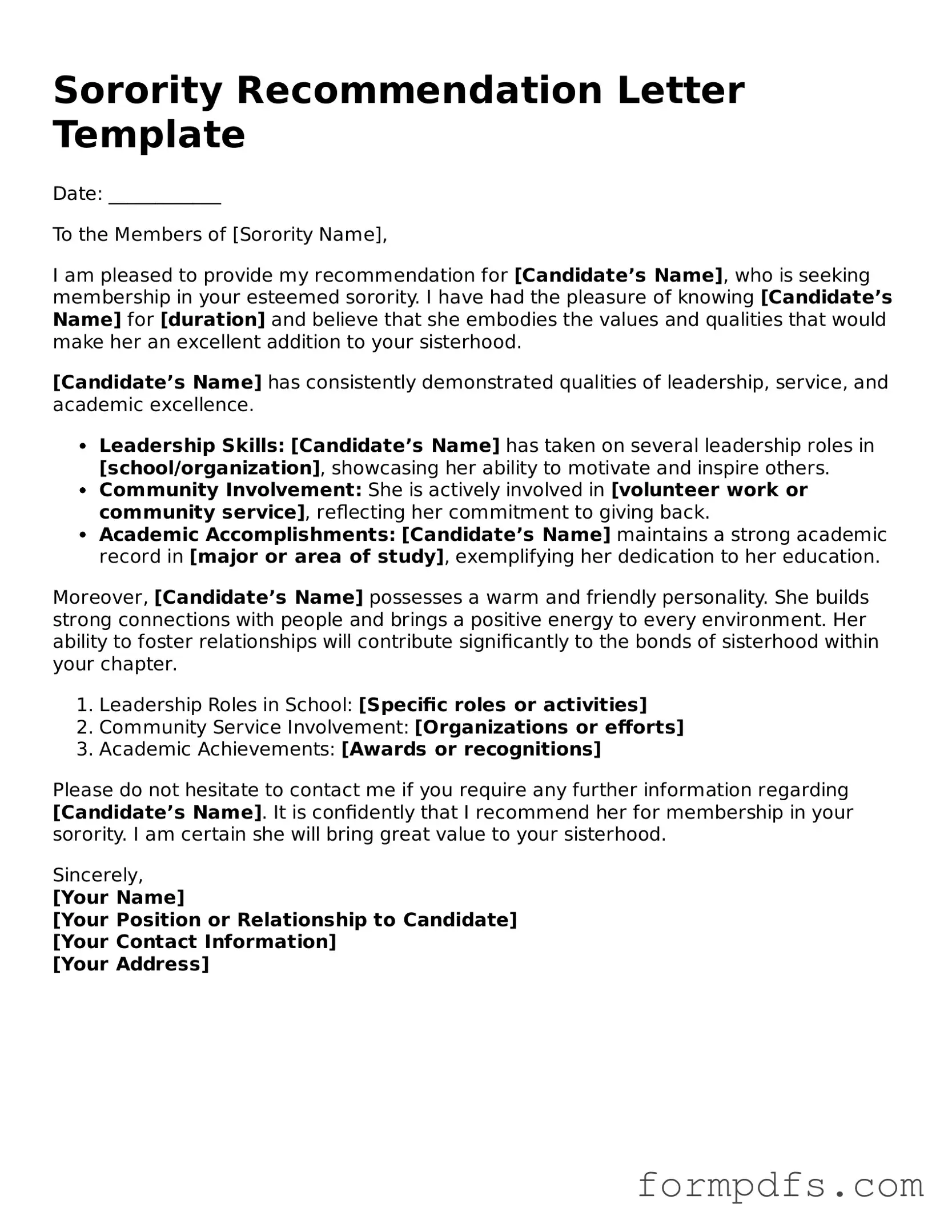What is a Sorority Recommendation Letter?
A Sorority Recommendation Letter is a document that supports a potential new member's application to join a sorority. It provides insight into the individual's character, achievements, and suitability for membership. This letter is typically written by someone who knows the candidate well, such as a current member of the sorority or an alumna.
Who should write the recommendation letter?
The recommendation letter should ideally be written by a sorority member or alumna who is familiar with the candidate. This could be a family member, teacher, coach, or family friend who can provide meaningful insights into the candidate's personality and accomplishments.
What information should be included in the letter?
The letter should include the candidate's full name, a brief introduction of the writer, and specific examples of the candidate’s strengths, achievements, and character traits. It’s also helpful to mention any leadership roles or community service the candidate has participated in, as well as why the writer believes the candidate would be a good fit for the sorority.
Is there a specific format for the recommendation letter?
While there is no strict format, the letter should be typed and organized in a clear manner. It usually starts with the date, followed by the sorority's name and address, then a salutation. The body of the letter should be well-structured, and it should conclude with a closing statement and the writer's signature.
When should the recommendation letter be submitted?
Each sorority has its own timeline for submitting recommendation letters, often aligned with recruitment periods. It’s important to check the specific deadlines for the sorority the candidate is interested in, as submitting the letter on time can be crucial for consideration.
Can a candidate submit their own recommendation letter?
Typically, a candidate should not submit their own recommendation letter. The letter should come from someone else to provide an unbiased perspective on the candidate’s qualifications and character. However, the candidate can certainly ask someone to write it on their behalf.
What if I don’t know anyone in a sorority?
If you don’t have a connection to a sorority member, consider reaching out to friends or family who might know someone. Alternatively, some sororities offer resources or directories to help potential members find a recommender. Networking through school or community events can also be helpful.
Are recommendation letters required for all sororities?
Not all sororities require recommendation letters, but many do. It’s best to check the specific requirements of each sorority to understand what is needed for the application process. Some may have more stringent requirements than others.
Can I follow up on the recommendation letter?
Yes, it’s perfectly acceptable to follow up with the person who wrote the recommendation letter. A polite message expressing gratitude and checking on the status of the letter can be appropriate, especially if there is a deadline approaching.
What should I do if my recommendation letter is not submitted on time?
If a recommendation letter is not submitted on time, it could impact the candidate's chances of being considered for membership. It’s important to communicate with the sorority’s recruitment chair or designated contact person to explain the situation and see if any accommodations can be made.
